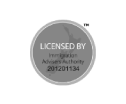Decoding Down Under: A Strategic Guide to Australia’s Skilled Migration Visas
Australia, with its vibrant economy, stunning landscapes, and high quality of life, continues to be a sought-after destination for skilled migrants from around the globe. But navigating the Australian visa system can feel like deciphering a complex code. This guide provides a strategic overview of the main skilled visa options, helping you determine the best path to achieving your Australian dream. We’ll break down the different visa categories, eligibility requirements, and key considerations to make an informed decision.
Understanding the Australian Skilled Migration Program
Australia’s skilled migration program is designed to attract individuals with the skills and qualifications needed to contribute to the country’s economy. The system operates on a points-based system, favoring applicants with specific skills, qualifications, and experience. Before diving into the visa categories, it’s crucial to understand the fundamental requirements that apply to most skilled visas.
- Skills Assessment: Most skilled visas require a positive skills assessment from a relevant assessing authority. This assessment verifies that your qualifications and experience meet Australian standards. You can find a comprehensive list of assessing authorities and their corresponding occupations on the Department of Home Affairs website.
- English Language Proficiency: Demonstrating English language proficiency is a non-negotiable requirement. The Department of Home Affairs accepts various English language tests such as IELTS, TOEFL iBT, PTE Academic, and OET. The required score varies depending on the visa subclass.
- Age: Age is a factor in the points test. Generally, applicants aged between 25 and 32 receive the maximum points. While it’s still possible to apply if you are older, understand that age will affect your overall points score.
- Health and Character Requirements: All applicants must meet Australia’s health and character requirements. This involves undergoing medical examinations and providing police clearances from all countries where you have lived for 12 months or more in the past 10 years. More information on these requirements can be found on the Department of Home Affairs website.
The Core Skilled Visa Options
Let’s explore the six primary skilled visa options available for individuals seeking to migrate to Australia:
1. Skilled Independent Visa (Subclass 189)
The Golden Ticket to Permanent Residency
The Skilled Independent Visa (Subclass 189) is a highly sought-after permanent visa. It allows skilled workers to live and work anywhere in Australia. This visa does not require sponsorship from an employer or nomination from a state or territory government.
- Eligibility: To be eligible, you must:
- Be invited to apply.
- Score at least 65 points on the points test. Note that this is only the minimum and higher scores are generally needed.
- Be under 45 years of age.
- Have a positive skills assessment in an occupation on the relevant skilled occupation list.
- Meet the health and character requirements.
- Strategic Considerations: The Subclass 189 is ideal if you have a high points score and are not tied to a specific location in Australia. Competition for this visa is fierce, so maximizing your points is crucial. Ways to boost your points include achieving a superior English language test score or obtaining further qualifications.
2. Skilled Nominated Visa (Subclass 190)
State Sponsorship: Your Pathway to Permanent Residency
The Skilled Nominated Visa (Subclass 190) is another permanent visa option. It requires nomination by a state or territory government. This nomination adds 5 points to your overall score and significantly increases your chances of receiving an invitation to apply.
- Eligibility: To be eligible, you must:
- Be nominated by a state or territory government.
- Be invited to apply.
- Score at least 65 points on the points test (including the 5 points for state nomination).
- Be under 45 years of age.
- Have a positive skills assessment in an occupation on the relevant skilled occupation list. Each state and territory has its own list and requirements.
- Meet the health and character requirements.
- Strategic Considerations: The Subclass 190 is a strategic option if your occupation is in demand in a particular state or territory. Each state and territory government publishes its own skilled occupation lists and specific requirements. Researching these lists and tailoring your application to meet the specific needs of a region can significantly improve your chances of success.
3. Skilled Work Regional (Provisional) Visa (Subclass 491)
Embrace Regional Australia: A Stepping Stone to Permanent Residency
The Skilled Work Regional (Provisional) Visa (Subclass 491) is a provisional visa that allows skilled workers to live, work, and study in designated regional areas of Australia for five years. After three years of living and working in a designated regional area, you may be eligible to apply for permanent residency through the Subclass 191 visa.
- Eligibility: To be eligible, you must:
- Be nominated by a state or territory government or sponsored by an eligible family member residing in a designated regional area.
- Be invited to apply.
- Score at least 65 points on the points test (including the points for state nomination or family sponsorship).
- Be under 45 years of age.
- Have a positive skills assessment in an occupation on the relevant skilled occupation list.
- Meet the health and character requirements.
- Strategic Considerations: The Subclass 491 visa is a viable option if you are willing to live and work in regional Australia. Regional areas often have lower living costs and less competition for jobs. This visa can be a pathway to permanent residency if you meet the requirements after three years. The definition of “regional Australia” is quite broad and includes many areas outside of major cities.
4. Employer Nomination Scheme (Subclass 186)
Employer Sponsorship: A Direct Path to Permanent Residency
The Employer Nomination Scheme (Subclass 186) is a permanent visa that allows Australian employers to sponsor highly skilled workers to fill positions they cannot fill locally.
- Eligibility: To be eligible, you must:
- Be nominated by an approved Australian employer.
- Be under 45 years of age (unless exempt).
- Have a positive skills assessment (if required for the occupation).
- Meet the English language requirements.
- Meet the health and character requirements.
- Strategic Considerations: Securing employer sponsorship is a direct route to permanent residency. Networking and actively seeking out job opportunities with Australian companies are crucial steps. Focus on industries and roles where there is a demonstrated skills shortage. You can research in-demand occupations using government resources and industry reports.
5. Skilled Employer Sponsored Regional (Provisional) Visa (Subclass 494)
Regional Employer Sponsorship: A Provisional Pathway
The Skilled Employer Sponsored Regional (Provisional) Visa (Subclass 494) allows employers in designated regional areas of Australia to sponsor skilled workers. It’s a provisional visa, offering a pathway to permanent residency after meeting certain requirements.
- Eligibility: To be eligible, you must:
- Be nominated by an approved employer in a designated regional area.
- Be under 45 years of age (unless exempt).
- Have a positive skills assessment (if required for the occupation).
- Meet the English language requirements.
- Meet the health and character requirements.
- Strategic Considerations: Similar to the Subclass 491, this visa requires you to live and work in regional Australia. It offers a pathway to permanent residency after three years through the Subclass 191 visa, provided you meet the eligibility criteria. Target employers in regional areas who are actively seeking skilled workers in your field.
6. Temporary Skill Shortage Visa (Subclass 482)
A Temporary Solution with Long-Term Potential
The Temporary Skill Shortage Visa (Subclass 482) allows employers to sponsor skilled workers for temporary positions where they cannot find a suitable Australian worker. While it’s a temporary visa, it can be a pathway to permanent residency through the Subclass 186 visa for certain occupations.
- Eligibility: To be eligible, you must:
- Be sponsored by an approved Australian employer.
- Meet the English language requirements.
- Have the required skills and experience for the nominated occupation.
- Meet the health and character requirements.
- Strategic Considerations: The Subclass 482 visa can be a strategic entry point into the Australian job market. While it doesn’t automatically lead to permanent residency, it can provide valuable Australian work experience and potentially lead to employer sponsorship for a permanent visa down the line. Be sure to check if your occupation is on the eligible skilled occupations list.
Choosing the Right Visa: A Strategic Decision Framework
Selecting the right skilled visa requires careful consideration of your individual circumstances, skills, and goals. Here’s a framework to guide your decision-making process:
- Assess Your Skills and Qualifications: Determine if your occupation is in demand in Australia and if you meet the requirements for a positive skills assessment.
- Evaluate Your Points Score: Use the Department of Home Affairs’ points calculator to estimate your points score for the Subclass 189, 190, and 491 visas.
- Consider State and Territory Nomination: Research the skilled occupation lists and requirements for each state and territory to identify potential nomination opportunities.
- Explore Employer Sponsorship: Network with Australian companies and explore job opportunities in your field.
- Weigh the Pros and Cons of Regional Migration: Determine if you are willing to live and work in regional Australia to increase your chances of obtaining a visa.
- Seek Professional Advice: Consider consulting with a registered migration agent to receive personalized advice and guidance. The Migration Agents Registration Authority (MARA) website can help you find a registered agent.
Conclusion: Charting Your Course to Australia
Migrating to Australia is a significant undertaking that requires careful planning and execution. By understanding the different skilled visa options, assessing your eligibility, and developing a strategic approach, you can increase your chances of achieving your Australian dream. Remember to stay informed about the latest visa regulations and seek professional advice when needed. Australia awaits, and with the right strategy, you can successfully navigate the path to a brighter future.










